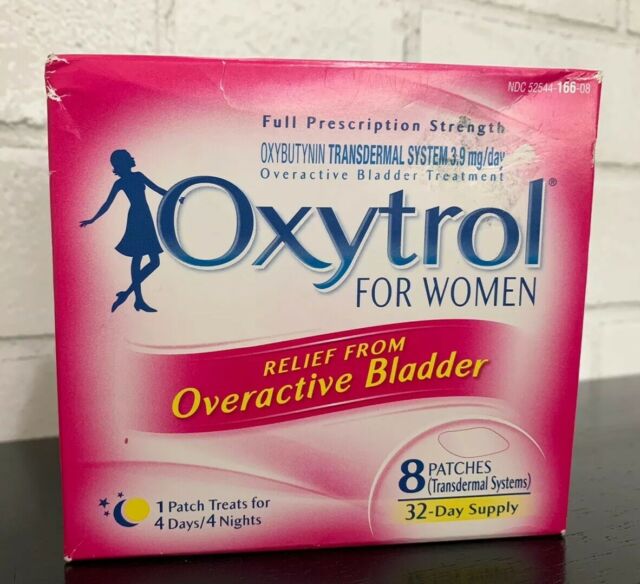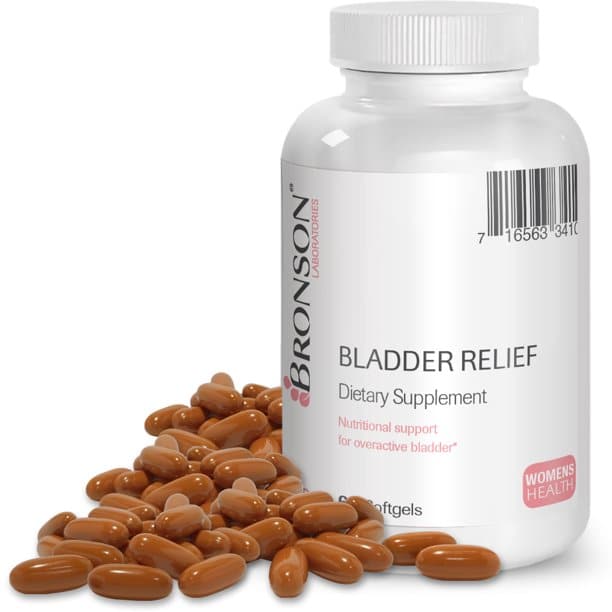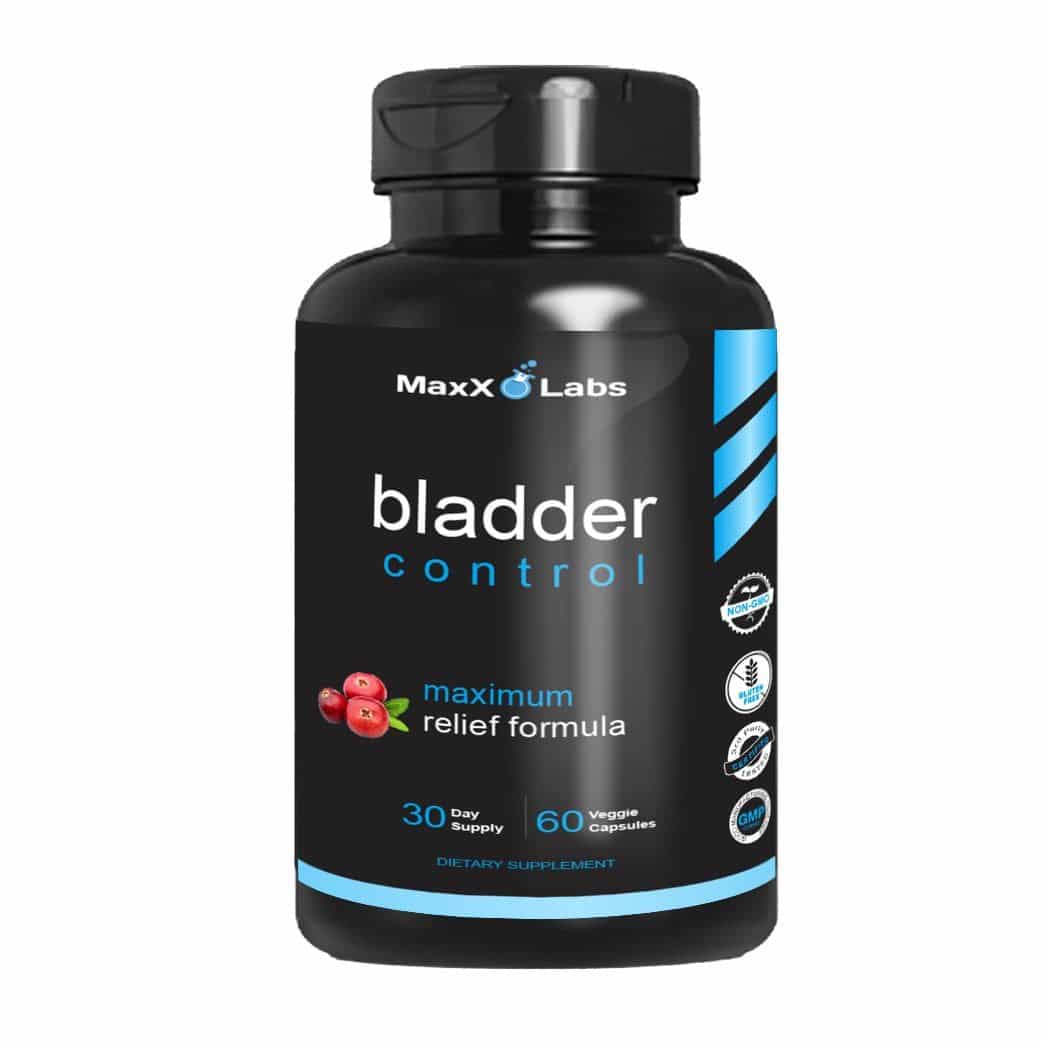Do Regular Kegel Exercises
Once you find your pelvic floor muscles, you can complete regular Kegel exercises to strengthen them. Simply contract your pelvic floor muscles, hold them for five to ten seconds, and relax them. The Urology Care Foundation suggests that you complete at least two sessions of Kegel exercises per day. Up to 30 contractions per session.
When To Consider Meds
If you have urge incontinence and have tried nondrug measures for several months but symptoms are still interfering with your quality of life, you might consider adding medication.
There is a role for these drugs, Hochman says, but typically only after trying safer treatments first.
How do they work? In some people with urge incontinence, the bladder muscles contract at the wrong time, causing the uncomfortable feeling of urgency and often leaks. Drugs used to treat the condition relax the bladder muscles, which can increase the storage size of the bladder and reduce the urge to urinate.
Based on analysis of the evidence by CR Best Buy Drugs, none of the drugs clearly works better than the others.
If you and your doctor conclude that one is worth trying, consider generic prescription extended-release oxybutynin. It costs about twice as much as the short-acting drug if youre paying out-of-pocket but offers the convenience of once-a-day dosing.
In addition, research suggests that it has a somewhat lower risk of side effects than other forms of the drug, including the OTC patch, as well as some other bladder drugs, including short-acting tolterodine.
Watch closely for side effects, particularly memory problems or confusion, which can be subtle, Hochman says. Because of those risks, our experts advise against the drugs for anyone diagnosed with dementia.
If symptoms havent improved after eight weeks, ask your doctor about adjusting the dose or trying a different option.
What Is Urinary Incontinence
Urinary incontinence is the accidental loss of urine. According to the National Association for Continence, over 25 million adult Americans experience temporary or chronic urinary incontinence. UI can occur at any age, but it is more common among women over 50. Urinary incontinence may be a temporary condition that results from an underlying medical condition. It can range from the discomfort of slight losses of urine to severe, frequent wetting.
Recommended Reading: How To Stop Bladder Leakage When Running
What Are Common Bladder Irritants
Before you find out what products to buy, it is important to learn more about the bladder itself. After all, most of us dont know enough about organs and their functions. The bladder is a muscular sac in the pelvis located right above and behind the pubic bone.
When its empty, the bladder resembles a pear in shape and size. On the other hand, when its full your bladder expands. The inner lining of the bladder tucks into the folds and it expands to accumulate the fluid i.e. urine.
Weak bladder control is a frequent problem that happens due to a wide array of causes. Some of the most common causes of weak bladder control include:
- drink enough fluids, particularly water
- Take enough time to empty your bladder completely
- Urinate after sex
- Wear loose-fitting clothes and cotton underwear
Bladder control requires some lifestyle adjustments, but sometimes you need more than that. This is where bladder control products step in. They help you get rid of the unpleasant symptoms and urgent urination in an entirely natural manner.
Why Is Urinary Incontinence A Health Issue

Urinary incontinence is a very common problem in aging women . When women leak urine during exercise, sneezing, or coughing, doctors call this type of incontinence stress-related . When women have strong urges to urinate and have trouble holding urine until getting to the bathroom, they may have what is known as urgency incontinence . Although most women have one or the other type of incontinence, older women often have both types. Incontinence hurts womens self-confidence, interferes with their ability to enjoy their favorite activities, and decreases the quality of their lives .
Also Check: Is Pumpkin Seed Oil Good For Overactive Bladder
Read Also: Botox For Ms Bladder Problems
Prevalence And Epidemiology Of Oab
As many as 17% to 40% of adult women in the United States have OAB.4,7This is approximately 20 million OAB patients. However, the true numberis likely to be far higher, as many patients do not enter the healthcare system. There are three major reasons for this reluctance to do so.4First, many patients view OAB as an inevitable part of aging and chooseto take various self-care measures rather than visit a physician foradvice. Second, as many as 61% of OAB sufferers do not realize that thecondition can be successfully treated with medication and therefore donot seek help. Finally, OAB can induce shame and embarrassment inpatients, and the resultant negative social stigma may cause them toavoid any mention to health care providers.
Although OAB occurs in women of all ages, it exhibits a strong age association.3,8 The median age is 52 years, and the most common age range is 45 to 60 years.4
Find Your Pelvic Floor Muscles
Overactive bladder is one common cause of bladder control problems, especially among women. Doing regular Kegel exercises can help treat this condition. These exercises also called pelvic floor muscle exercises.
Kegel exercises are relatively easy to do. But before you can start, you need to find your pelvic floor muscles. The next time you urinate, try to stop your flow of urine midstream. The muscles you use to do that are your pelvic floor muscles.
Also Check: How To Cure Bladder Incontinence
Azo Bladder Control With Go
$ as of January 30, 2022 7:34 pm
Features
- WORRY LESS AZO Bladder Control with Go-Less helps reduce occasional bladder leakage from laughing, coughing, sneezing, exercise. AZO Bladder Control does what pads and liners cant do: helps support bladder muscle strength and allows you to feel more confident to laugh without worry!
- GO LESS This safe, drug-free supplement contains a naturally sourced blend that supports bladder strength and helps reduce the urge to go, day and night. Healthy bladder control helps manage those frustrating nighttime visits to the bathroom
- GET STARTED RIGHT It is recommended for the first two weeks to take one capsule three times a day morning, noon, and night. After two weeks, only one capsule twice a day, morning and night, is required. Safe to use every day when used as directed
- STICK WITH IT! You may experience bladder health benefits in as little as two weeks, however your body may respond faster or slower, so give it up to 6 weeks to realize the full benefits
- WHO IS AZO BLADDER RIGHT FOR? The AZO Bladder Control Go-Less blend is safe for both Women and Men. AZO Bladder Control is not intended for use by pregnant or nursing women. Consult your healthcare professional before taking any new supplement or medication
A New Nonprescription Product
Women may try the behavioral changes mentioned above, aswell as one of several prescription medications that relax the muscles of the bladder to preventcontractions. Physicians may also attempt such therapies as applicationof electrical impulses or Botox.
A new nonprescription product may be helpful for overactive bladder. It is known as Oxytrol For Women, which is available as a patch that is worn continuously on the skin for 4 days and contains the medication oxybutynin.
This product may be appropriate for you if you have hadtwo or more of the following symptoms for at least 3months: 1) urinary frequency, more than 8 times in 24 hours 2) urinaryurgency and 3) urge incontinence. However, urinary frequency can alsobe caused by urinary tract infections, diabetes, pregnancy , and other more serious conditions. If you think you have anyof these, you should see a physician instead.
The products label will have many additional useprecautions, warnings, and instructions. You should read and heed eachof these. Further, it is wise to Consult Your Pharmacist for additional assistance regarding use of this innovative new approach to overactive bladder.
Remember, if you have questions, Consult Your Pharmacist.
Recommended Reading: Urine Test For Bladder Infection
Bladder Control: Medications For Urinary Problems
Medically reviewed by Drugs.com. Last updated on Jul 15, 2022.
Bladder control problems sometimes continue even after making lifestyle changes and trying bladder training. When other options don’t work, it may be time to talk to your health care provider about medications.
Medications are available for people who often have sudden, intense urges to urinate, also called overactive bladder. They’re also available to people who have urine leaks that can happen along with overactive bladder. This is called urge incontinence.
There are fewer drug options for people who have urine leaks during activity. This is called stress incontinence. Stress incontinence can cause leaks when coughing, sneezing or lifting heavy objects.
Here’s a look at drugs commonly used to treat bladder control problems and their possible side effects. Medications combined with behavioral treatment might be more effective than medication alone.
Tips To Get Your Bladder Under Control
Take control of your bladder
Do you find yourself struggling to make it to the bathroom in time? Urinary incontinence is a common condition. Your doctor can help you understand whats causing it and recommend a treatment plan.
Lifestyle changes can also help get your bladder under control. Learn about six steps you can take to reduce your risk of accidents and help you get back to enjoying everyday activities, leak-free.
Read Also: How To Get Relief From A Bladder Infection
What Are The Symptoms Of Overactive Bladder
Overactive bladder represents a collection of symptoms. These symptoms include:
- Urinary urgency. Urinary urgency is a sudden, uncontrollable need to pee. Once you feel the need to pee, you have a short amount of time to get to a bathroom.
- Frequent peeing. A frequent need to pee means you have to go to the bathroom more often than usual.
- Urge incontinence. Urge incontinence is a sudden, uncontrollable need to pee, and you may leak pee.
- Nocturia. Nocturia is the need to get up to pee at least two times each night.
What Tests Will Be Done To Diagnose Overactive Bladder

A healthcare provider may order tests to help diagnose overactive bladder. These tests may include:
- Urinalysis. A urinalysis examines the visual, chemical and microscopic aspects of your pee. A provider will look for red blood cells, white blood cells and bacteria. If you have any of them in your pee sample, you may have an infection that causes OAB.
- Urodynamic testing. Urodynamic tests measure how much pee remains in your bladder after you go to the bathroom, how much you pee, how fast you pee and how much pressure is on your bladder as it fills with pee.
- Ultrasound. An ultrasound is a noninvasive imaging test that allows a healthcare provider to take a detailed look at your bladder.
- Computed tomography scan. A CT scan is a noninvasive imaging test that produces 3D images of your bladder.
- Cystoscopy. A healthcare provider will use a special instrument to look inside your bladder from your urethra. The provider typically uses a numbing gel so you dont feel pain in your urethra. In rare cases, they may use general anesthesia, so you arent awake, wont move and wont feel any pain.
Also Check: How Do Guys Get Bladder Infections
What Causes Urinary Incontinence
Urinary incontinence is not an inevitable result of aging, but it is particularly common in older people. It is often caused by specific changes in body function that may result from diseases, use of medications and/or the onset of an illness. Sometimes it is the first and only symptom of a urinary tract infection. Women are most likely to develop urinary incontinence during pregnancy and after childbirth, or after the hormonal changes of menopause.
Could Your Overactive Bladder Be Something Else
Urgency, incontinence, and urinary frequency can all be caused by having urinary tract infections , kidney stones, prostate infection or enlargement, or could be from medicine you take to treat other conditions, such as high blood pressure. The first question your doctor might ask if youre having urinary problems is what medicines youre taking. If they dont ask, be sure to bring it up.
Other conditions can cause symptoms similar to those of overactive bladder, tooespecially the need to make frequent bathroom trips. These include bladder cancer, diabetes, heart disease, and neurologic disorders, such as multiple sclerosis, Parkinsons disease, spinal cord injuries, and strokes.
Other conditions can also cause urine leakage. For example, stress incontinenceleaking urine when you cough, sneeze, run, jump, or even laughis sometimes confused with overactive bladder. Its caused by a weakness of the muscles that help keep the bladder closed. Some people have a combination of overactive bladder and stress incontinence.
Another bladder disorder called overflow incontinence can have symptoms similar to overactive bladder. This condition is usually caused by an inability to empty the bladder, due to an obstruction or a problem with the muscles that contract the bladder. So much urine builds up in the bladder that it starts leaking out.
Read Also: Bladder Problems After Spinal Surgery
Also Check: Why Do You Lose Control Of Your Bladder
Dr Laura Squire Chief Healthcare Quality And Access Officer At The Mhra Said:
We encourage women and healthcare professionals who have experience of using this vital treatment to engage with the consultation and make your views heard. Every response we receive will help us gain a better picture of whether people think this reclassification would be beneficial.
Living with an overactive bladder can be extremely difficult, which is why its so important that we hear from as many people and womens groups as possible.
We are thoroughly committed to improving access to medicines where it is safe to do so
How Should I Take Vesicare
Take VESIcare exactly as prescribed by your doctor. Follow all directions on your prescription label and read all medication guides or instruction sheets.
VESIcare is usually taken once per day with or without food. Follow your doctor’s instructions.
Do not crush, chew, or break the tablet. Swallow it whole.
Shake the oral suspension before you measure a dose. Use the dosing syringe provided, or use a medicine dose-measuring device .
Take the tablet with water.
After taking VESIcare LS liquid drink a glass of water or milk. Avoid taking the liquid with food or other drinks or you may have a bitter aftertaste.
Store this medicine in the original container at room temperature, away from moisture and heat. Keep the bottle tightly closed when not in use. Throw away any unused liquid 28 days after you first opened the bottle.
Also Check: Malignant Neoplasm Of Bladder Unspecified Icd 10
How Should I Take Betterwoman
Two capsules daily. Minimum recommended dosage 3-4 bottles. Take a 3-day break between bottles. Continue using thereafter for ongoing improvement and maintenance. For faster results, you may take 2 capsules twice or three times a day.
It is important to remember that your bladder control problems did not develop overnight. It will take time for BetterWOMAN to help your bladder. Be patient, follow the usage directions, and monitor your progress carefully by using the Test Your Bladder Form. Contact us if you have any questions.
Options For Treatment Remedies Or Management Of Incontinence
Once you understand the reason for your incontinence, the choice of what to do about it, and if and how to treat it, is up to you. Most professionals suggest that their patients first try a form of treatment other than the use of medication or surgery.
Depending upon the type and cause of your incontinence, lifestyle changes, or exercises, with or without equipment to help identify and strengthen the pelvic floor muscles, may help. For some, medications that affect the bladder or the sphincter can be effective. Surgery, an artificial sphincter, or an injection of a substance into the sphincter muscle may be recommended. Absorbent products or collection devices may help. Whichever you choose, be sure to discuss the latest information available with your health care professional. You may find that something new has been developed which may be appropriate for you.
Don’t Miss: How To Treat My Dog’s Bladder Infection
A New Nonprescription Product For Overactive Bladder In Women
W. Steven Pray, PhD, DPhBernhardt Professor, Nonprescription Products and DevicesCollege of Pharmacy
Gabriel E. Pray, PharmD CandidateCollege of PharmacyWeatherford, Oklahoma
US Pharm
Occasionally, the nonprescription product market undergoesa significant change. There is no greater change than the debut of anew product labeled to treat a medical condition that has never beforebeen judged amenable to self-care. The September 2013 introduction ofOxytrol For Women to the nonprescriptionproduct market is a perfect example of an Rx-to-OTC switch that couldalter the health care habits of countless women.1,2
How Do You Buy The Best Over The Counter Bladder Control

- Is it worth buying an Over The Counter Bladder Control?
- What benefits are there with buying an Over The Counter Bladder Control?
- What factors deserve consideration when shopping for an effective Over The Counter Bladder Control?
- Why is it crucial to invest in any Over The Counter Bladder Control, much less the best one?
- Which Over The Counter Bladder Control are good in the current market?
- Where can you find information like this about Over The Counter Bladder Control?
buying guides for Over The Counter Bladder Control
You May Like: What Causes Weak Bladder In Females
Don’t Miss: Is A Bladder Infection Different Than A Uti